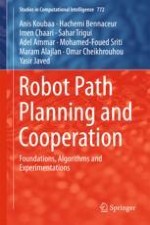This book presents extensive research on two main problems in robotics: the path planning problem and the multi-robot task allocation problem. It is the first book to provide a comprehensive solution for using these techniques in large-scale environments containing randomly scattered obstacles. The research conducted resulted in tangible results both in theory and in practice. For path planning, new algorithms for large-scale problems are devised and implemented and integrated into the Robot Operating System (ROS). The book also discusses the parallelism advantage of cloud computing techniques to solve the path planning problem, and, for multi-robot task allocation, it addresses the task assignment problem and the multiple traveling salesman problem for mobile robots applications. In addition, four new algorithms have been devised to investigate the cooperation issues with extensive simulations and comparative performance evaluation. The algorithms are implemented and simulated in MATLAB and Webots.
